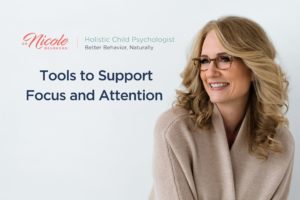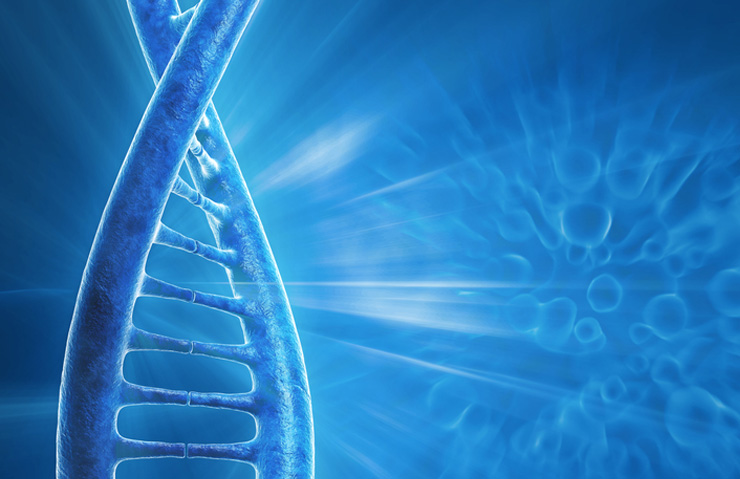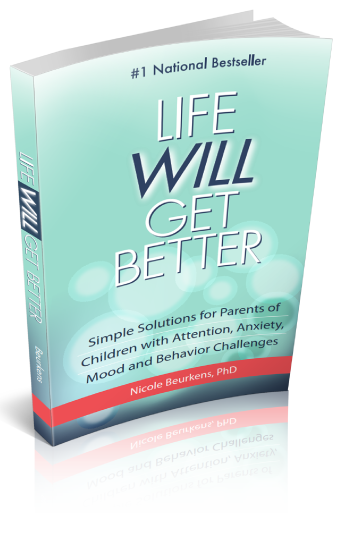Almost 10% of school-age children in the United States are diagnosed with Attention-Deficit/ Hyperactivity Disorder (ADHD), and many more exhibit at least some of the symptoms.
Generally speaking, ADHD is a condition involving significant challenges with executive function – the higher-level cognitive abilities that allow people to regulate things like attention, emotions, and behavior. More specifically, symptoms of ADHD include difficulty with maintaining attention on tasks, following through on instructions, organization, forgetfulness, excessive fidgeting or physical activity, impulsive behavior, and related types of issues.
The rates of ADHD symptoms in children have been steadily on the rise over the last 2 decades, which means there are more children and teens than ever before struggling with these challenges that get in the way of performing well in school, managing life at home, engaging appropriately with peers, and managing emotions appropriately.
The standard treatment approaches for ADHD are behavioral therapy, parent training, educational supports, and prescription medication. While these interventions can certainly be beneficial for some children and families, there are many more supports and approaches that can be used to improve symptoms and help kids function more optimally.
A holistic approach, which looks at the whole person and all aspects of their life and functioning, is the best way to truly understand and meet the unique needs of each child with ADHD. It’s important to remember that people with ADHD have brains that are unique and wonderful in many ways. There are strengths that come along with having a neurodivergent brain, and we want to celebrate and promote these strengths while also addressing the difficulties.
An important component of a holistic approach is identifying nutrition and lifestyle factors that may be playing a role in symptoms. There is a growing body of research showing how things like diet, nutrient status, sleep, movement, screen time, and stress contribute to symptoms of ADHD and an individual’s overall functioning. It’s important for parents to have access to this information in order to best support their children.
The great news is that nutrition and lifestyle strategies can be used alone or in combination with interventions like behavior therapy and medication to optimize results. Every child can benefit from the strong foundation of a healthier diet and lifestyle, regardless of what other approaches may be used.
Let’s take a closer look at five key components of a holistic treatment approach for ADHD symptoms.
Food
The foods we eat play a significant role in all aspects of our brain function and mental health. Research has shown this repeatedly in the general population, as well as for children and teens with specific mental health conditions. Food provides the nutrient building blocks needed for every process in the brain and body to work properly. This includes making things like neurotransmitters and hormones that play a role in mood, anxiety, executive function, behavior, and more.
When a child isn’t eating enough foods that contain these vital building blocks, their health and functioning suffer. Research has also shown that some symptoms of ADHD can be caused or exacerbated by eating foods with chemicals that negatively impact the brain.
Here are some research-based food approaches you can take to support your child’s mental health and brain function, and potentially reduce ADHD symptoms:
- Increase the amount of nutrient-dense whole foods in the diet. This means including things like meats, fish and seafood, fruits, vegetables, and whole grains into meals and snacks to boost the amount of nutrients consumed. Whole foods are foods eaten in their natural form. An example of a whole food would be an apple, as compared to a processed apple juice or apple-flavored fruit snacks. Remember that whole foods contain the nutrient building-blocks your child’s brain relies on to function properly. Research has shown that increased intake of these kinds of nutrient-dense whole foods is associated with lower risk of ADHD symptoms.
- Reduce the amount of ultra-processed foods, especially food dyes and other artificial chemicals like preservatives. Ultra-processed foods tend to be packaged foods that have many chemicals and artificial ingredients in them, and are able to stay on the shelves for long periods of time without spoiling. These foods generally don’t provide many of the nutrients our brains and bodies need, and include things like added sugars and chemicals that research has shown contribute to many physical and mental health issues.Specifically, ingredients like artificial food dyes, artificial sweeteners, and chemical preservatives can cause (or at least contribute to) ADHD symptoms. There is a host of research connecting high ultra-processed food intake to virtually every kind of physical and mental health problem, so it’s best to eat these in limited amounts, especially for kids who are struggling with ADHD symptoms.
- Stabilize blood sugar levels. When children have blood sugar levels that spike and crash throughout the day, typically the result of eating high-sugar and low-nutrient dense foods, it negatively impacts their ability to focus, learn, and manage their emotions and behaviors in all environment. One of the simplest and best ways we can support focus and attention, positive mood, appropriate behavior, and clear thinking is to keep blood sugar levels stable throughout the day.This means avoiding foods with high amounts of added sugars, and combining protein, fiber, and healthy fats into meals and snacks. Blood sugar stabilizing snacks including things like apples with nut butter, guacamole with carrots and whole grain chips or crackers, or trail mix with whole grain granola, pumpkin seeds, raisins, nuts, and coconut chips.The goal is to keep your child off the blood sugar roller coaster as much as possible by feeding these nutrient-dense balanced options whenever possible. This is especially important in the morning before school, as starting the day with protein and blood-sugar balancing foods gives kids the building blocks needed for focus and learning in the classroom. Watch this video for more tips and information on this important topic.
- Improve omega-3 fatty acid levels, especially DHA and EPA. Research has shown that kids with ADHD tend to have lower levels of these omega 3’s necessary for proper brain structure and function, and that increasing these levels can improve symptoms. You can increase levels through incorporating more fatty cold water fish like salmon, tuna, and sardines into your child’s diet. Grass-fed beef also provides a good amount of these nutrients. Chia seeds, flax seeds, and some nuts also can help support healthier omega-3 levels in the brain and body. For more information on the specific foods that can boost omega-3 levels, and how to get your kids to eat them, you can read this article.
Specific Nutrients
As the number of children and adults with mental health symptoms continues to rise, there is growing interest in the role specific nutrients may play in both causing symptoms and improving them. This is especially the case for children, where there is appropriate concern from many practitioners and parents about using medications that generally have a lack of short- and long-term research showing safety and effectiveness in this population. I’ve written more extensively about medication and ADHD here.
Specific nutrients can play a role in many physical and mental health symptoms, and this is an area of growing scientific research. Studies have shown that several specific nutrients may be connected to ADHD symptoms, including iron, magnesium, zinc, omega-3 fatty acids, and vitamin D. Studies have also shown that children with ADHD symptoms benefit from taking a broad spectrum multi-nutrient formula daily, even when they don’t have specific nutrient deficiencies.
These specific nutrient strategies may be beneficial for your child:
- Talk with your child’s healthcare provider about testing for specific nutrient levels to determine if they are optimal or would benefit from support. Unfortunately, many medical providers are not aware of or well-versed in looking at these issues, so you may need to find an integrative healthcare provider who can support you with this. This article on testing specific nutrient levels may be helpful to you and your medical practitioner.
- Consider taking a high-quality fish oil supplement daily to support brain health and function. You can find detailed information about the types of supplements to use, how to actually get your child to take them, and dosing recommendations here and here.
- Consider using a research-based high dose broad spectrum multi-nutrient formula to support symptom improvement. This is the one I use and recommend in my practice. Note that if your child takes medication or other supplements that it’s best to collaborate with a healthcare provider around the best ways to incorporate these nutrients.
Sleep
The connection between sleep and ADHD symptoms cannot be overstated. It plays a major role in brain health and function, and children who don’t get enough good quality sleep on a consistent basis are at significantly increased risk of developing or worsening ADHD symptoms. In fact, studies have shown that sleep problems may account for many of the symptoms seen in children diagnosed with ADHD.
It’s entirely possible that a child ends up diagnosed with ADHD, when it’s actually a sleep issue that needs to be addressed. It’s also the case that 75% of children and teens diagnosed with ADHD have some kind of sleep issue, including difficulties settling down to fall asleep, sleep apnea, restless legs, medication-related insomnia, and many others. I’ve written about this more extensively in this article.
This means we need to pay good attention to what’s happening for kids around sleep, and ensure we’ve got good sleep hygiene strategies and supports in place for them. Kids should have consistent bedtime routines, limits on when they go to bed (even for teens), and no devices in their bedrooms at night to disrupt sleep. We also need to advocate for medical evaluation and intervention if symptoms of sleep disorders are present.
If you’re trying to treat ADHD symptoms but there are really unidentified sleep problems, you won’t get very far and your child will continue to struggle. Treatment for sleep issues can involve everything from consistent bedtime routines, to supplements for calming and relaxation, to tonsil removal – and many other options.
Talk with your child’s primary healthcare provider if you notice signs of sleep problems in your child:
- Consistent struggles with falling asleep and/or staying asleep
- Snoring
- Pauses in breathing during sleep followed up a gasp for air
- Restlessness (covers all over, moving around a lot during the night, kicking/banging against the wall or other people when sharing a bed, etc.)
- Frequent night waking
- Excessive fatigue in the morning and/or throughout the day even with getting enough hours of sleep
Movement
The human brain requires physical movement to support proper functioning. This is especially true for children and teens, as movement and physical activity support the development of brain connections necessary for focus, concentration, information processing, memory, emotional and behavioral regulation, and more. When kids aren’t getting an adequate amount of physical movement, their daily functioning can suffer. We know that this generation of children is the most sedentary in history, which raises serious concerns about how this lack of movement impacts them.
How can you support your child’s brain function and reduce symptoms with movement?
- Prioritize at least 30 minutes (60 is better) of physical activity daily. This can include playing outside, riding bikes, rollerblading, going for a walk, climbing trees, taking a yoga class, doing an obstacle course in the basement, or anything else that involves moderate physical activity.
- Be mindful of how much time kids are spending on screens, and work toward balancing screen time with movement time and other valuable activities. Try setting an expectation that movement come before screen time in the after-school and evening hours, and especially on weekends. Research consistently shows that while technology can bring many benefits to our kids’ lives, it can also bring many concerns and problems. This article covers the potential downsides of screen time and technology on your child’s overall health, wellness, and brain function in much more detail.
- Model a physically active lifestyle with your own activities and schedule. Kids are much more likely to do what they see us doing, as opposed to what we tell them to do. When we model incorporating physical activity into our daily lives, kids are more likely to do the same. Consider how you can make movement a family activity by going for a walk after dinner each night, taking a bike ride on the weekend, or playing tag in the yard.
- For kids who crave physical movement, find ways to allow them to move their body within activities and tasks that are normally sedentary. Research shows this is an effective strategy and actually improves focus and work completion. Allow them to bounce on a ball chair during homework time, pace in the back of the room during class lectures, read on the swing, or bounce their legs against a bungy cord tied around their chair legs during family dinner. This article has 25 ways to incorporate movement-focused “brain breaks” into the day.
Stress
When we experience higher levels of stress, especially for a prolonged period of time, it takes a toll on our brain function and overall mental health (not to mention our physical health). This is especially true for children and adults with ADHD, as their experience of living in the world already tends to produce more stress than people without these types of challenges. High levels of stress make it more difficult to think clearly, focus and attend, remember things, and manage emotions. That’s why it’s critical to focus on keeping stress levels at a manageable level, and incorporate stress-reduction strategies into daily life.
Here are some ways to help keep stress at a manageable level, and support overall mental wellness:
- Balance criticism and correction with plenty of positive feedback. These kids often are on the receiving end of a lot of correction at home and school. It’s important to make sure you’re spotlighting all the good things, too, in order to support self-esteem and stress reduction. Set a goal to compliment your child’s progress, effort, and positive qualities at least 3 times daily. You can check out this article for more tips on promoting positive interactions and success for your child.
- Prioritize downtime and fun by making sure kids have enough time to relax and experience joy. It’s not possible to keep going non-stop on things that are challenging or non-preferred. We all need time to decompress and do something that brings enjoyment. Make sure your child has time after school to relax, and that their overall weekly schedule isn’t so jam-packed that they can’t ever do nothing, engage in an activity just for the sake of enjoyment, or blow off steam.
- Neurofeedback is a research-based treatment approach to reduce stress and symptoms for many children with ADHD symptoms. There are various forms of neurofeedback, but it can be especially helpful for reducing stress and anxiety, while improving focus and processing. There are options that are done in a clinical setting, as well as options that can be used at home. Whichever you choose, look for a provider with experience treating children with ADHD.
- Mindfulness practices can also help reduce stress levels. Helpful child-friendly mindfulness activities include simple breathing practices, yoga poses, mindfulness and meditation stories, and reducing the level of multi-tasking in activities. You can get lots of specific activity ideas and strategies in this article on mindfulness activities for children and teens.
Whether your child has been diagnosed with ADHD, or is struggling with one or more of these types of symptoms, food and lifestyle strategies can make a positive difference. Implementing a holistic approach supports their mental and physical health now and for the future, and allows them to feel and function at their best.








